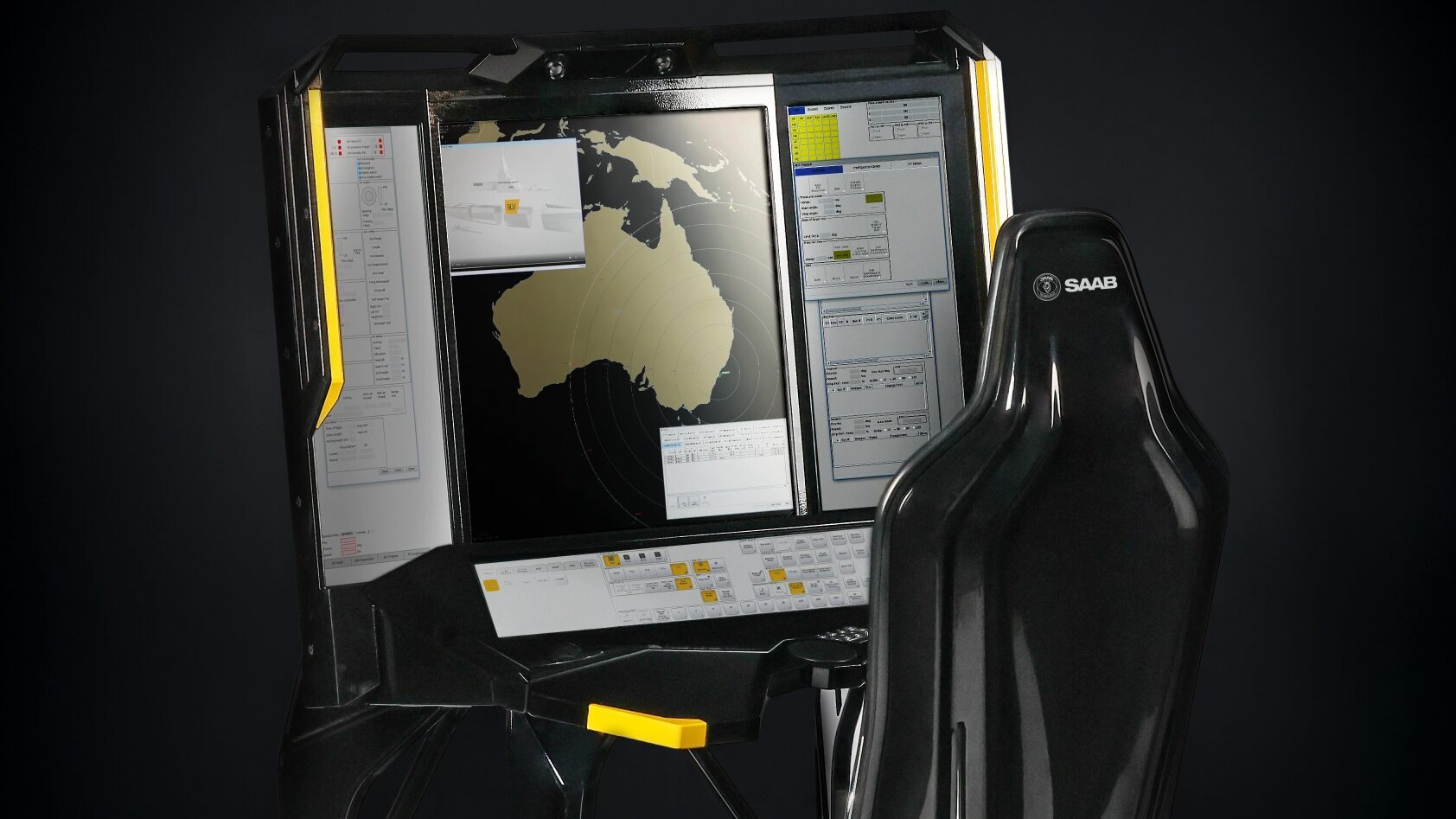
Saab’s naval future operator workspace has been self funded and designed in 8 months (Saab)
BELFAST— Swedish manufacturer Saab has launched a naval-based future operator workspace concept, and separately a new variant of the company’s Barracuda Ultra-Lightweight Camouflage Screen (ULCAS) — both destined to be on display for the first time at a major trade show in London next week.
Designed in Australia, the future operator workspace has been in development for eight months and takes on board feedback from naval operators looking to solve problems that come with “more data, more threats and more multitasking,” said Johan Hagg, 9LV combat management systems product manager at Saab, during a Tuesday media briefing.
Although all design specifications have not been set, nor a path to production finalized, the full console concept includes a chair and a human-machine interface, and is intended for integration with the company’s 9LV combat management system. That combat management system has been designed for patrol vessels, frigates and submarines, designed to cover a broad range of missions including protection and escort; anti-access anti-denial, border control, search and rescue and peace support operations, according to Saab company literature.
The new operator workspace will also include a main tactical display unit, left and right side monitors, a touch input display, two trackballs and a touchpad.
“[The design] opens up for new innovations that we haven’t yet touched on, but I’m looking forward to see what we can integrate in the chair itself,” added Hagg. “You could input things in the armrest or you could have micro audio speakers, very close to your ears. You could [sense] vibrations of feedback when something dangerous [happens].”
Military strategists and officials have noted that the modern battlefield creates a deluge of data that, to be effective, operators and commanders must organize, analyze and act on, quickly. That’s led to calls for ways to lighten or streamline the “cognitive load.” US Marine Forces Special Operations Command, as one example, recently called for hardware and software that could support the fusing of data into a single system and display — what other defense firms have called a single “pane of glass.”
Alongside the singe built prototype, Hagg said a second will also be manufactured in “Europe,” with a “product phase” planned once customer demonstrations and any requests for adjustments have been made at the Defence Security and Equipment International (DSEI) expo. He also said that the workstation or a modified “immersive design” could be integrated on submarines, with the exception of the chair, which would likely not be capable of installation because of how much space it would require. Hagg said that the new design could be used for both future ships and retrofitted to older vessels.
The workstation project has been entirely self-funded by Saab to date.
“I would consider any partner that will step up and say that ‘we’re really interested in this’ because that would probably accelerate our process, otherwise I have to [continue to] do it on our own money,” added Hagg.
Separately, Saab says its newly announced ULCAS will be capable of concealing soldiers from enemy surveillance radar but allow them to send and receive GPS and VHF band communications, through the use of Frequency Selective Surface (FSS) technology.
“We heard from our users that [soldiers] sitting under their nets with radio devices, might have poor signals and have to move out of their tents, making them vulnerable,” said Johan Jersblad, senior development engineer at Saab Barracuda.
“So what we have done is made a material that provides protection against enemy surveillance, meaning the incoming radar waves are absorbed by the net….but where we have the [friendly] GPS devices and RF communication devices, we have made a window for those frequencies.”






















